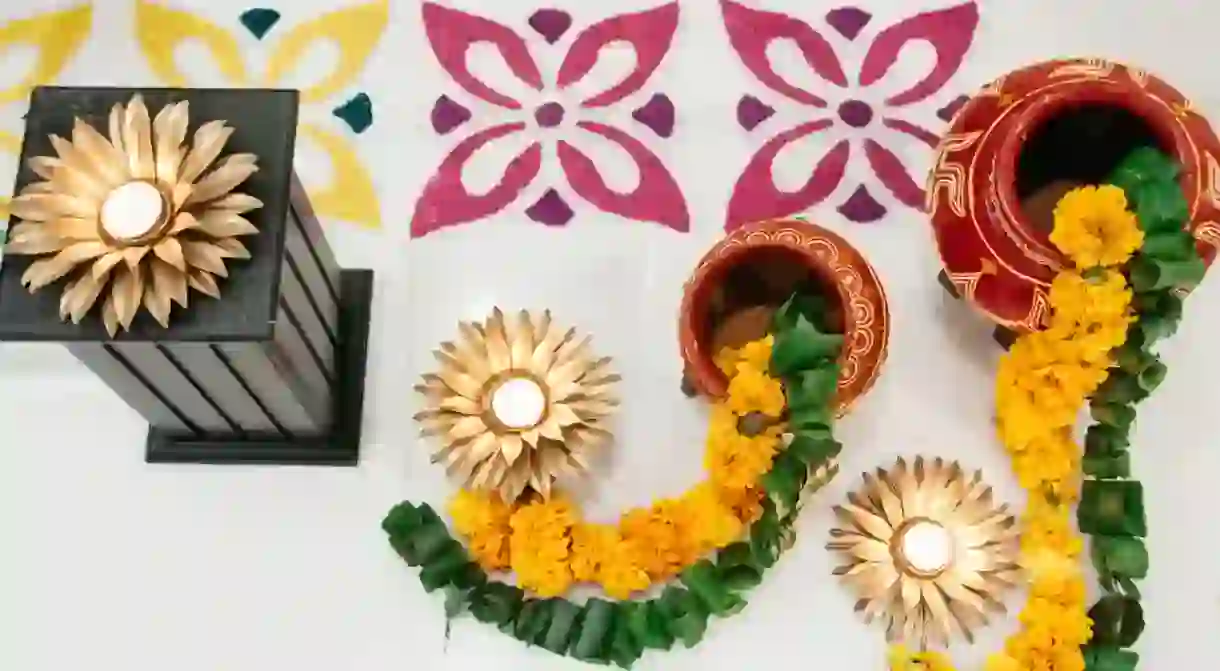15 Surprising Facts You May Not Know About Diwali

Diwali, the Indian festival of lights, is one of the most widely celebrated religious occasions across the world. While Diwali is one of the few festivals in India that does not have a regional root and is celebrated across the country, it is also a festival that has as many stories associated with it as the number of different traditions and religions that celebrate it. Here are some of the most surprising facts about Diwali that you probably didn’t know.
A festival across religious lines
While Diwali is considered predominantly to be a Hindu festivity, the reality is that it is an occasion that is celebrated by several other religions including Jainism, Sikhism and numerous folk religions.

One festival, many stories
And all these religions and traditions not only have different deities to pray to on Diwali, they also sometimes have different mythological versions of the same tales.

The day Lakshmi roams the earth
The prime reason why Diwali is marked by flamboyant decorations, new clothes and flashy displays of colors and lights is because it is widely believed that Diwali is the day on which the Hindu goddess of prosperity, Lakshmi supposedly roams the Earth and blesses people with wealth and happiness.

The Nirvana of Mahavira
Another popular belief that signifies the occasion of Diwali for Jainism, India’s sixth largest religion, is that this is the day on which the last of the 24 Thirthankaras (Great Teachers), Lord Mahavira attained ‘Nirvana’.

Guru Gobind Ji’s escape from Gwalior
While most traditions surrounding Diwali go back thousands of years, one of the most recent traditions associated with it is the one in Sikhism. Sikhs celebrate Diwali as the occasion on which their teacher Guru Hargobind Ji was released from the captivity of Mughal ruler Jahangir in Gwalior along with several Hindu kings.

A five-day extravaganza
While South India celebrates Diwali as a one day festival, most parts of north and north-west India observe it as a five-day festivity, each area with its own significance and each dedicated to a different deity.

Return of Ram to Ayodhya
The most popular tradition behind Diwali dictates that it marks the day on which the Hindu deity Lord Ram returned to his home city of Ayodhya after vanquishing the demon king Ravana. According to mythology, lights were lit all across the country to celebrate his return to rule.

Triumph of good over evil
In southern parts of India however, Diwali (or Deepavali) is celebrated as the day on which Lord Krishna killed the demon Narakasura and brought peace to the lands. According to legends, Narakasura repented in his last moments and requested Mother Earth that his death be celebrated with lights and colors across the lands every year. A wish that was gladly granted.

A ‘cracker’ of a time
The most popular and ubiquitous tradition associated with Diwali is the bursting of firecrackers. However, this is a recent addition to Diwali celebrations, since until the 1900s firecrackers and pyrotechnics were too expensive and were only used by the royals.

Sivakasi, India’s firecracker town
Post the Independence of India and subsequent import restrictions, Tamil Nadu‘s southern town of Sivakasi achieved prominence as the firecracker and match-making factory for the whole of India. At its peak, the town contributed over 90 percent of all firecracker sales in the country.

The human cost of firecrackers
While it is popular as India’s firecracker-hub, the less flattering thing the town of Sivvakasi is known for is its record levels of child labor. With increasing demand, most small enterprises in the town employ children to handle the dangerous chemicals associated with making firecrackers. So the next time you think of buying firecrackers, make sure they are responsibly sourced from brands with a no child-labor policy.

Dhanteras, India’s Golden Day
It is estimated that Indian households hold a record 11% of the the total gold in the world. And a large chunk of it is bought every year as a custom during the festival of Dhanteras, which usually falls two days before Diwali. On Dhanteras, not only do families buy gold, they also clean and decorate their houses with elaborate rangolis (colorful powder designs usually made in the courtyard of the house) and more recently, fairy lights.

All is fair on Diwali
While Diwali is supposed to be a festival that signifies piety and purity, it is also the one day most associated with ‘fun’ for Indian families. One of the most popular traditions during Diwali in north India is that of playing cards and gambling with money in the evening. On this day alone, the family’s elders and youngsters all get together to take part in this fun activity.

A truly global festival
With a sizable Indian diaspora in almost every corner of the world, Diwali is celebrated with much fervor in several countries including Sri Lanka, Pakistan, Indonesia, Fiji, Thailand, Mauritius, Australia and Canada.

A day of peace against all odds
India and Pakistan have been at odds and have fought three wars over the last 70 years, and as a result the border between the two countries is always tense. However, Diwali is one of the few occasions on which soldiers from both sides lay aside their differences, meet and greet and even distribute sweets across the border to their counterparts every year.














